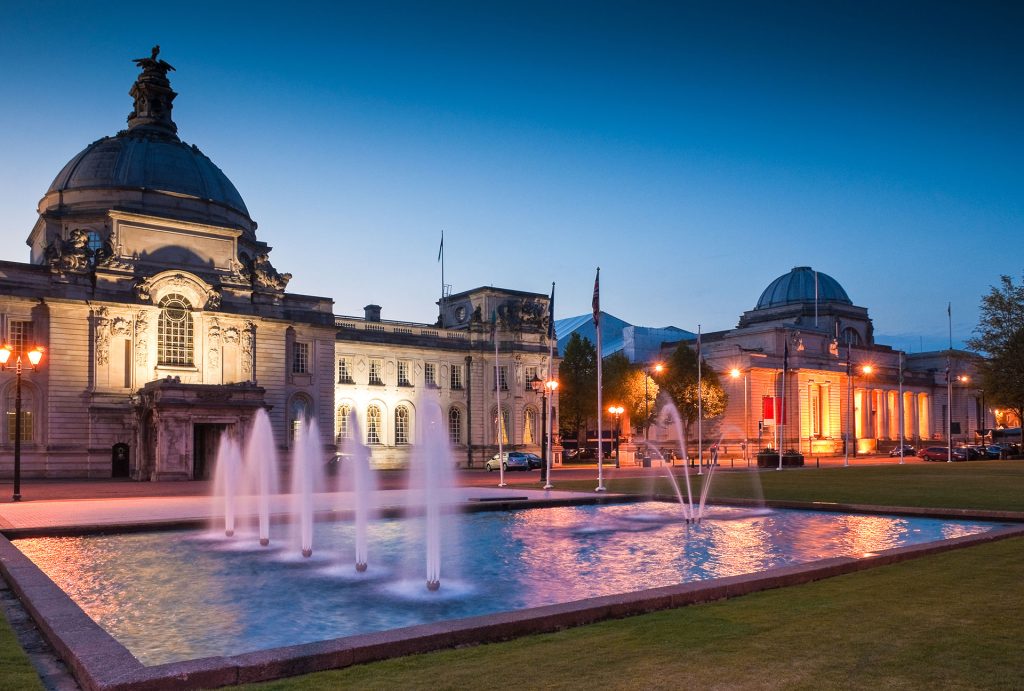The French Connection
Cardiff celebrates 60 years of its twinning with the French city of Nantes this year. Maggie Smales charts the intertwining tale of the two cities
Driving or walking down the Boulevard de Nantes, few of us probably question why one of Cardiff’s main thoroughfares has a French name. The formal twinning of the two cities, Cardiff and Nantes, dates back 60 years to 24 February 1964, but the links between South Wales and France are very much older.
We know that Teilo, one of the three patron Saints of Llandaff Cathedral, took refuge from the plague in Dol in Brittany in the middle of the 6th century. He stayed there several years and even, legend tells us, tamed a sea dragon and harnessed it to a nearby rock. Very appropriate for a Welsh saint.
Fast forward a few centuries and the Norman French settled extensively in Pembrokeshire and the Vale of Glamorgan, leaving place names like Bonvilston, home of the 12th century nobleman Simon de Bonville (called Tresimwn, or Simon’s town, by the Welsh who had yet to catch on to the use of surnames).
Invaders came again to Pembrokeshire from France in 1797, the last landing of a hostile army in mainland Britain, and were defeated at Fishguard, with Jemima Nicholas allegedly capturing 12 drunken French soldiers single-handed.
Sometimes the Welsh went in the opposite direction. Owain Lawgoch (Yvain de Galles), a descendent of Llywelyn the Great, fought on the side of French king Charles V in the 100 Years’ War and was assassinated at Mortagne in the Gironde in 1378 on the orders of the English court.
Specific links between Cardiff and Nantes owe their origins more prosaically to the coal trade. This may have begun as early as the 16th century, although the Nantes Chamber of Commerce first documented dealings in coal and timber with Cardiff in 1729. At the time, Nantes was already a thriving metropolis, whilst Cardiff was hardly more than an overgrown village.

Things were to change with the completion of the Glamorganshire Canal and the development of Cardiff Docks; also, through the vision of a Durham-born mining engineer, John Nixon, one of the first to realise the natural advantages of Welsh ‘steam’ coal for use in furnaces. Having surveyed the coalfields in Dowlais for the Marquess of Bute, he made his first trip to France and realised that the industrial potential of the Nantes region was being held back by a lack of reserves of good quality coal.
He worked first with sugar refineries in Nantes and, once they were persuaded of the virtues of Welsh coal, its use spread quickly in other manufacturing industries.
Cardiff became the boom town of Victorian Britain, its population growing from less than 2,000 in 1800 to c.165,000 in 1901. Meanwhile, Nantes developed as a major industrial centre, focussing, in particular, on shipbuilding and food processing.
The concept of ‘town twinning’ developed in the aftermath of World War Two, in an attempt to put an end to two generations of conflict in Europe by building links at a personal and community level. The first formal school exchanges with Nantes started in 1954.
It is difficult today to imagine the impact that these had on the girls and boys who took part. They were crossing huge cultural and sometimes social divides – even the food was a complete revelation for them as Britain had come out of rationing only one year before.

David Judd, a pupil in Cardiff High School, saved his money from a paper round in order to travel to Nantes. He came from a fairly typical lower middle class Cardiff family; money was tight, he had barely travelled before – day trips to Monmouth or to the seaside at Ogmore – and the mother of the GIs who had been billeted with the family in the run-up to D Day was still sending them food parcels with exotic goods such as cinnamon and nutmeg, then unavailable in Cardiff.
He remembers meeting his French pen friend on Cardiff General Station; a boy called Eric Tertrais, wearing plus fours, who came from a wealthy Nantais family, owners of a sardine tinning factory. In France, there was a grand home in Vertou and a holiday home, complete with maids, down the estuary at St Marc Sur Mer.
But the boys got on; David had a wonderful time and began a lifetime’s love affair with France which he has passed on to his son and to his granddaughter, who is currently teaching English in Lyon.
Adult exchanges started in 1981 and, after a three-year break because of the pandemic, are still going strong.
There are also a number of other formal and informal links, including between the Cȏr y Gleision choir and the Schola Cantorum de Nantes, and Cardiff Lawn Tennis Club and the Don Bosco Tennis Club in Nantes. Some links have been made more complicated by Brexit, for example between the parks and gardens departments in Cardiff and Nantes, and between the universities. But the two cities reaffirmed their friendship and commitment to twin city status in January 2020.
And for Francophones and Francophiles, there are opportunities in Cardiff to meet like-minded people, whether through the University’s or Cardiff Council’s Adult Education programmes, the Club de Français (club-de-francais@hotmail.co.uk),which meets in the Rhiwbina Memorial Hall, or the Société Franco-Britannique (www.francais-a-cardiff.org.uk), which meets in Insole Court, or indeed the Association for the Cardiff Nantes Exchange (www.cardiff-nantes.org), which aims to hold occasional social events during the year in both venues. They also organise an adult language exchange to continue to build personal links between the two cities.
On 24 April this year, these three organisations are joining with Cardiff Council to hold a dinner with music in Cardiff Golf Club to celebrate the 60th anniversary of the twinning agreement.
They will also be welcoming 26 language exchange partners from Nantes. If you are interested, you can find out more about this event by contacting nantes.exchange@yahoo.co.uk.

